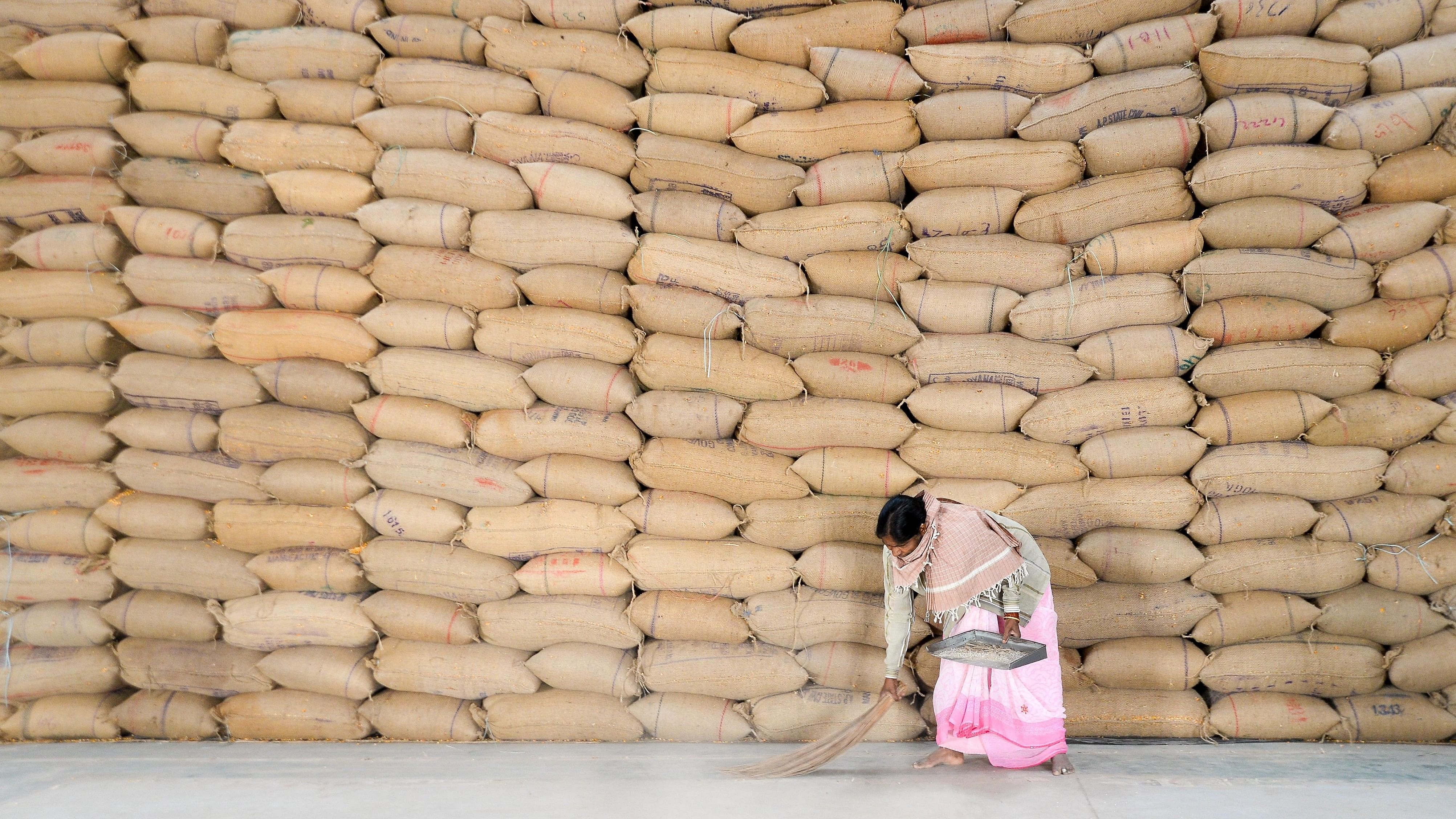
In 2018-19, 67% of the warehouse capacity was occupied, by 2023-24, occupancy dropped to 47%.
Credit: DH File Photo
Bengaluru: Despite the high demand for godowns and warehousing from the agricultural sector, occupancy of state-owned warehouses near Agricultural Produce Market Committees in Karnataka has dropped over the last five years.
In 2018-19, 67 per cent of the warehouse capacity was occupied, by 2023-24, occupancy dropped to 47 per cent. Officials and farmers say increasing cultivation and transportation costs have contributed to the disuse.
“For over five years now, the occupancy of warehouses under the purview of the Karnataka State Warehousing Corporation has been on the decline”, explains an official in the department. He adds that currently a majority of warehouses in Karnataka are used by traders and the government during the process of procurement.
Going by India’s capacity of 30.5 crore MT of foodgrains, the country can store only 50 per cent of what it produces. On the ground, the gap in warehousing is evident.
The state has a total of 160 warehouses, with a storage capacity of 18.5 lakh MT. The average occupancy in 2023-24 was 8.9 lakh MT and 8.5 lakh MT in 2022-23. Just five years ago, Karnataka had a net storage capacity of 17 lakh MT and an average occupancy of 67.3 per cent (11.4 lakh MT) of the storage in 2018-19.
Tipperudraiah, who heads a Sira-based FPO, puts into perspective the lack of warehousing, said, “We are forced to sell green gram and red gram at low rates during the season. Prices can average about Rs 40/kg. Just two to three months after harvest, prices almost double to Rs 80/kg”.
Agricultural economist and former chairman of the Karnataka Agricultural Prices Commission, Prakash Kammardi, explains that upgrading warehousing is essential in ensuring price stability. “Warehousing is important to combat post-harvest depression in prices for agricultural produce. Farmers can be encouraged to store their produce in the warehouses through pledge loans”, he says.
The establishment of a good network of godowns and cold storage facilities can help. “Cultivation costs have shot up due to increase in the cost of fuel and labour. We cannot afford to transport all the harvest to godowns. Another issue is the infrastructure in these godowns. We can only store grams for 15 days. The need now is for cold storage facilities”, he adds.
At least a hundred of the warehouses in the state, built before 2000, are lacking in terms of infrastructure.
Pledge loans, which provide 70 per cent of the value of the grain stored in state warehouses, can provide some financial relief for farmers, protecting them from distress sales. Even though the Karnataka State Warehousing Corporation does provide such loans, Kammardi says awareness is low. “Even farmers in the know tend to disregard this option because banks do not sanction such loans”, he says.
Some farmers have criticised state-owned godowns due to the complex procedures involved in renting a godown. For instance, Dhalappa, a member of an FPO in Bagalkot district, explains that the organisation intended to rent a state-owned warehouse. “More than two to three seasons passed. They kept asking us to furnish details on the crop, our financial capacity and more. We needed a storage capacity of 1,000 MT, eventually, we settled for private godowns of lesser capacities”, he says.
Besides, as cultivation costs shoot up, driven by increasing labour costs, farmers are finding it difficult to transport their harvest to APMC yards, says Dhalappa. “If there were warehouses at the hobli level, we could think of storing our produce there”, he adds.
Several amendments to the Karnataka Agricultural Produce Marketing (Regulation) Act, 1966 mandate that market yards put in place transportation from Hobli-level to aid farmers. However, most mandis have remained indifferent to such amendments, says Kammardi. "Because farmers are unable to access mandis and the surrounding infrastructure, long marketing channels have emerged and farmers do not benefit from their produce", he adds.